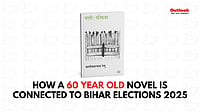Most digital products speak with a confidence they cannot fully guarantee. They promise perfect routes, flawless predictions, and seamless security, as if the world behaves according to a script. But UX Design Expert Saloni Pasad, whose work in leading New York agencies has shaped product experiences across multiple industries, believes the next leap in design won’t come from louder claims or sleeker automation. Instead, it will come from something quiet, humble, and deeply human: micro-honesty.
In this conversation, she explains why acknowledging uncertainty creates more trustworthy products, how small interaction decisions can shift emotional tone, and what it really means to build systems that respect the user.
Q: Saloni, you’ve worked across a wide range of industries in New York. With such diversity in projects, what would you say is the most enduring truth about interface design?
A: One thing I see everywhere is that most interfaces speak in perfect certainty. They tell you, “We found the fastest route,” or “This is the right choice for you,” as if complex systems behave predictably all the time. But designers know the reality: models falter, sensors misread, systems wobble under load. When an interface over-states its reliability, it creates a subtle fracture in trust, one that widens with each mismatch between expectation and reality.
Q: That’s a fascinating way of framing it. So what’s the alternative? How do you cultivate trust without pretending systems are perfect?
A: Design has a more sustainable path: micro-honesty.
It’s the practice of shaping tiny moments in an interaction to reflect the system’s actual capabilities, not its aspirations. These aren’t loud features; they’re quiet acknowledgments of uncertainty. They narrate what the system is thinking, reveal when confidence is low, soften human error, and offer small windows into how decisions are made. Those micro-signals change how people interpret the product’s intent.
Q: Could you share an example of micro-honesty that you think reshaped user expectations?
A: Gmail’s “Undo Send” is a perfect example. Technically simple, emotionally profound. It inserts a breath between intention and consequence. It doesn’t assume the human mind operates at machine speed; it honors the truth that sometimes clarity arrives a few seconds late. That tiny pause changed the emotional temperature of emailing. It showed that a reversible action can be a form of respect.
Q: How does micro-honesty appear in product work day-to-day? What does it look like in practice?
A: It takes many forms, like:
A preview that shows exactly what will happen before a user commits
A reversible state that cushions accidental taps
A contextual note explaining why a sensitive detail is required
An indicator that reveals when system confidence is low
A progress state that tells users what’s actually happening
A recommendation clearly labeled with its source: “Based on your saved trips” rather than just the outcome
Individually these feel small, but together they create a design rhythm of clarity. Over time, users feel aligned with their tools, not controlled by them.
Q: You’ve talked before about designing for uncertainty. Can you give examples of where honesty with uncertainty actually improves experience?
A: Consider a weather app that says, “Low confidence forecast, conditions are shifting quickly.” Most apps present weather with authority even when the data is conflicted. A simple confidence indicator invites users to plan more wisely. It positions the product as a transparent interpreter of reality rather than an overconfident oracle.
Another example is a budgeting tool that says, “This category looks higher than usual. Want to check your recent transactions?” It doesn’t dramatize the alert. It doesn’t hide the logic. It opens a small window into the system’s reasoning and builds a collaborative tone.
Even microcopy can embody micro-honesty. When Dropbox says, “Encrypting large files, this may take a moment,” it gives users a narrative. Humans relax when they understand what’s happening. Mystery breeds impatience; clarity breeds dignity.
Q: It sounds like micro-honesty is as much about emotion as accuracy. Why do these details matter so much emotionally?
A: Interfaces are emotional machines as much as technical ones. Every design decision shapes how users feel about their own competence. When a system admits uncertainty gracefully, it validates the user’s experience instead of gaslighting it. When it provides escape hatches, like undo states, exploration feels safe. When it contextualizes requests, users feel respected, not mined.
Q: Some might ask whether too much transparency overwhelms users. How do you calibrate what to reveal and what to hide?
A: The craft lies in calibration. Too much transparency becomes noise. Too little becomes friction. I often ask three guiding questions:
Where does the user take on risk without realizing it? That’s where a preview, explanation, or confidence cue helps.
Where does the system make silent assumptions? Assumptions should be visible enough for users to disagree with them.
Where might the user want a second chance? Undo states and reversible actions aren’t signs of weak design, they’re signs of humane design.
Q: What happens to long-term trust when a product designs through micro-honesty?
A: Trust accumulates through micro-signals. A clarification here, a reversible step there, an honest acknowledgment of uncertainty. Products that narrate their logic help users build accurate mental models. Products that admit limits avoid disappointing people. Products that offer safeguards empower deeper exploration.
In a digital world full of triumphant claims about intelligence and effortlessness, the interfaces that stand out are the ones that speak with grounded clarity. They don’t inflate. They don’t hide. They communicate with steadiness.
Q: Finally, what’s the deeper philosophy behind all this? What does micro-honesty mean to you as a designer?
A: Micro-honesty is ultimately an act of respect. It honors the intelligence of users, the imperfections of systems, and the reality that great design isn’t about performing perfection. It’s about setting truthful expectations and meeting them consistently. In an era of shifting algorithms and accelerating promises, these small truths are the anchors that make products feel trustworthy, human, and quietly dependable.






















